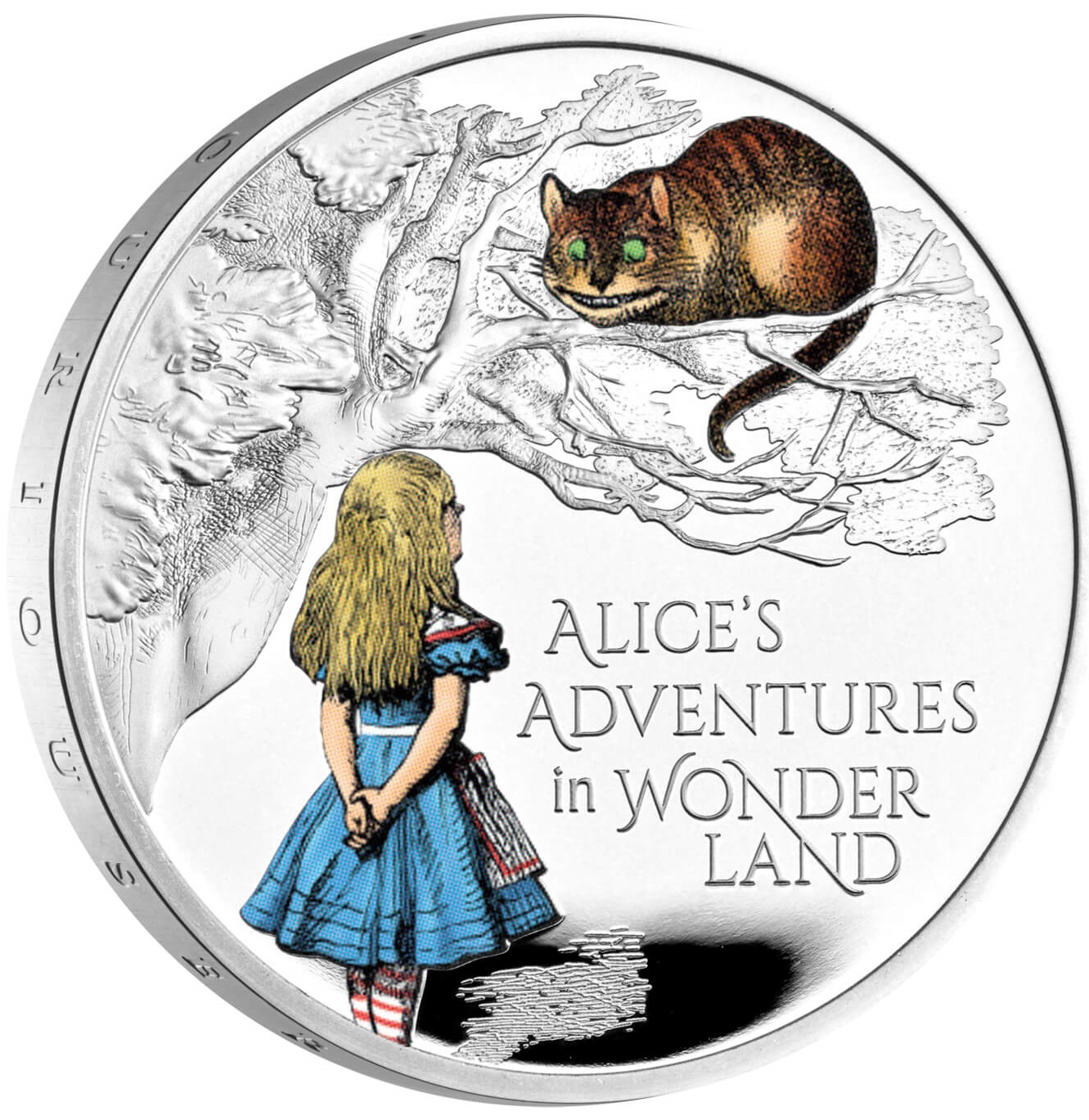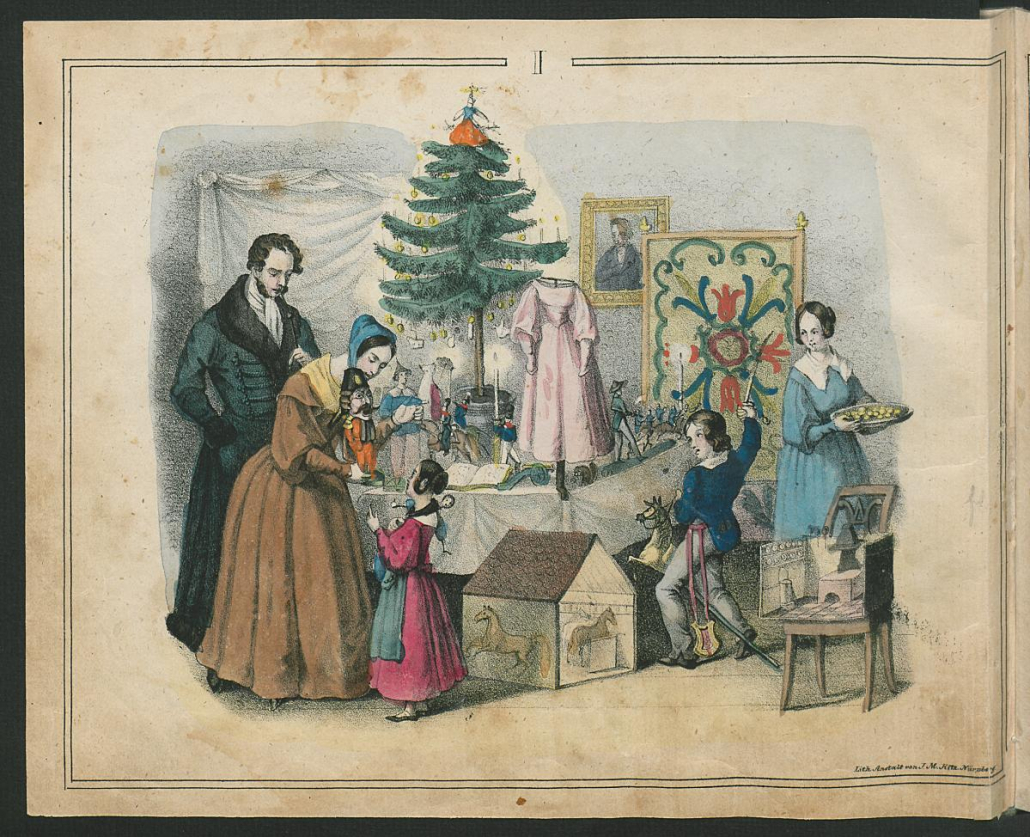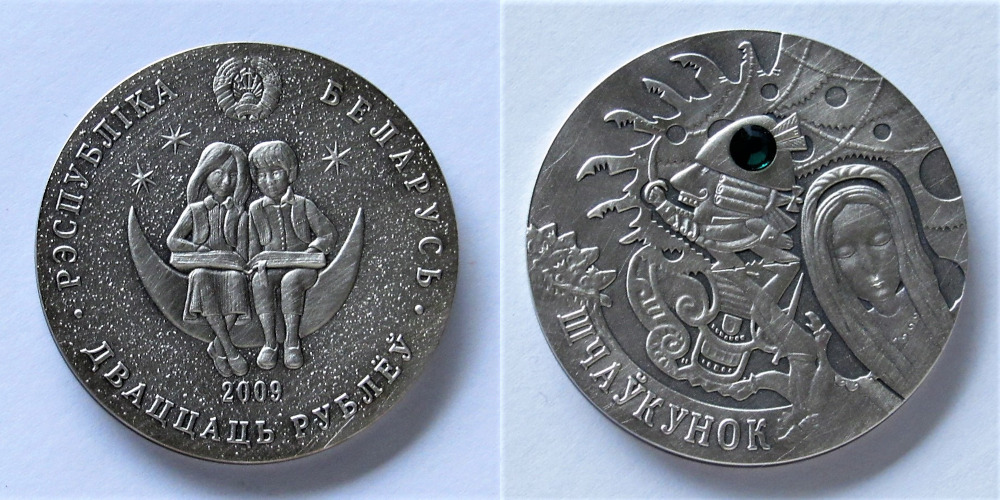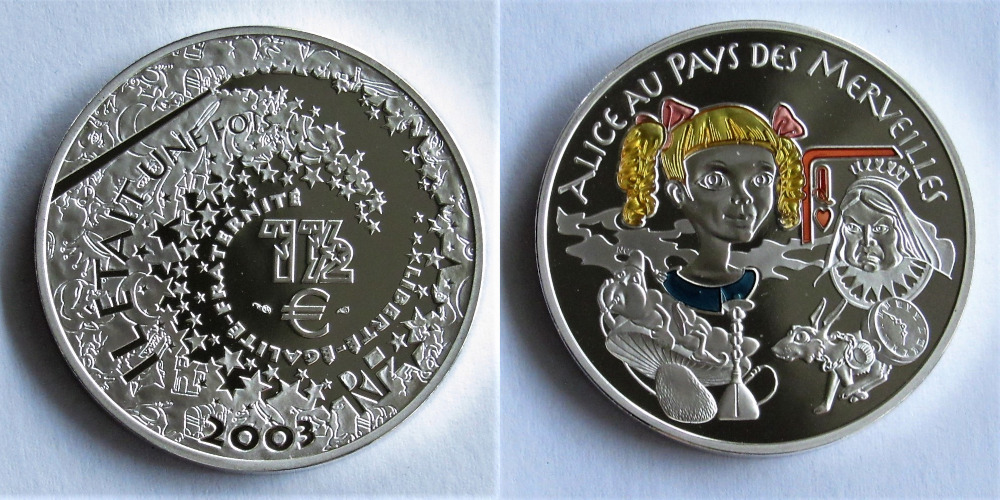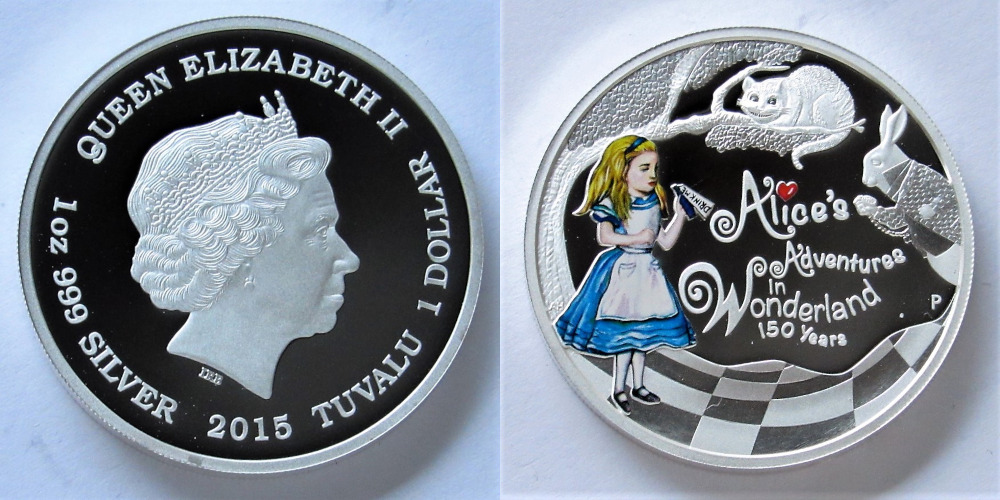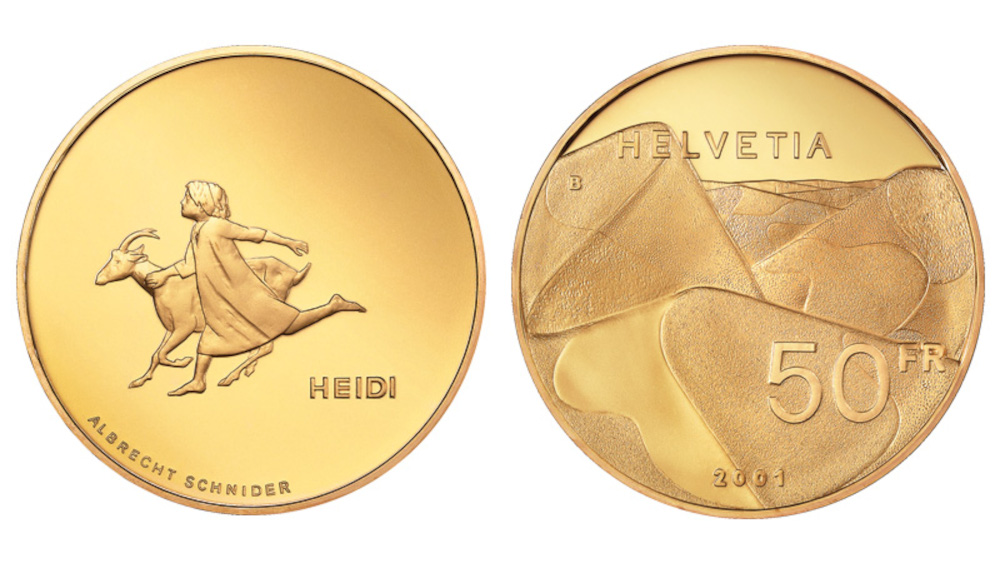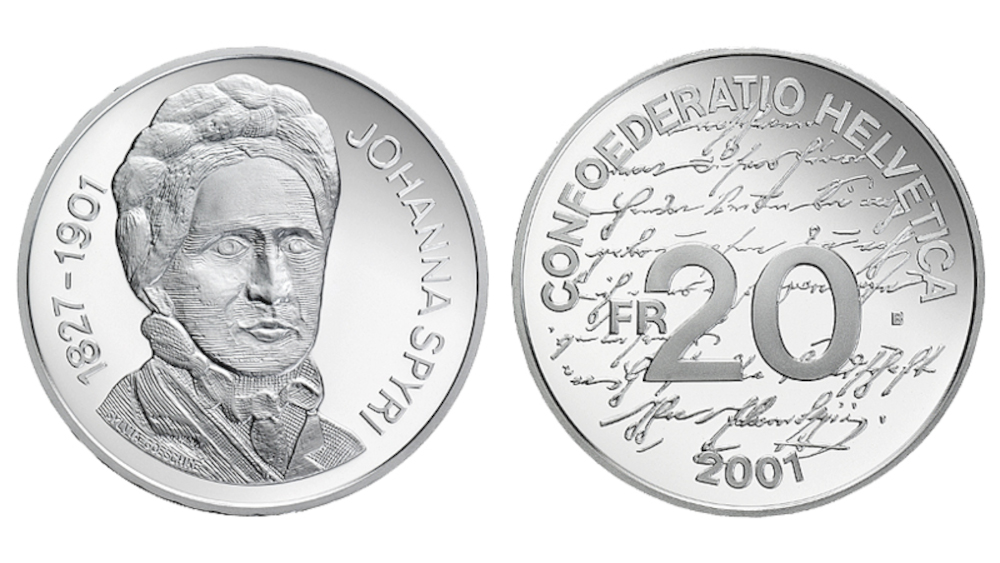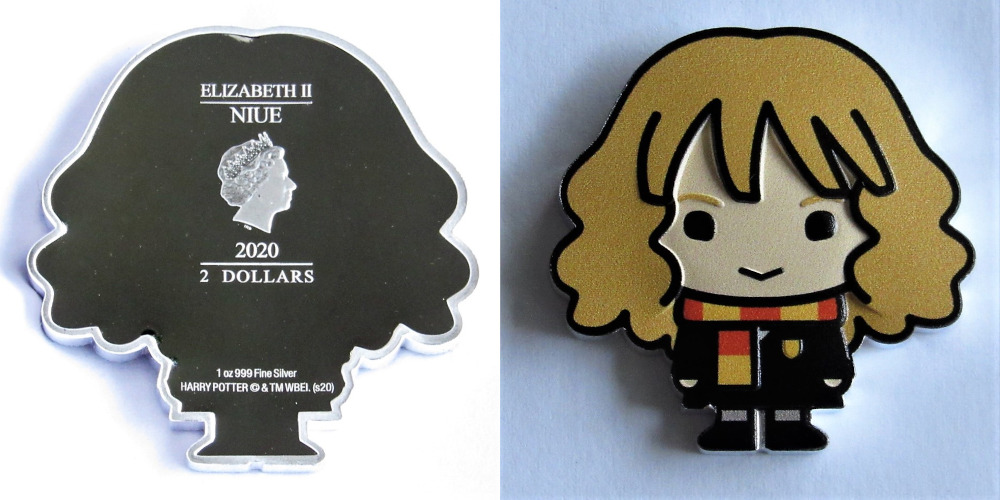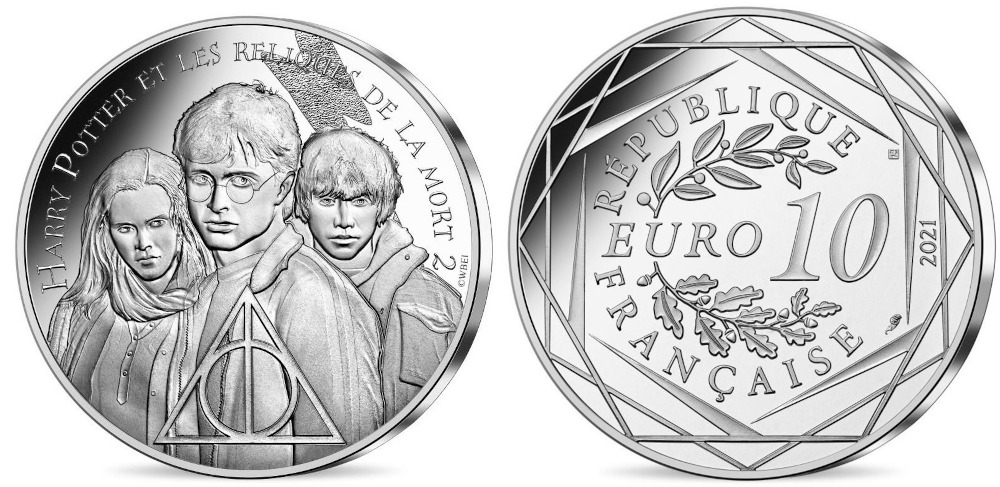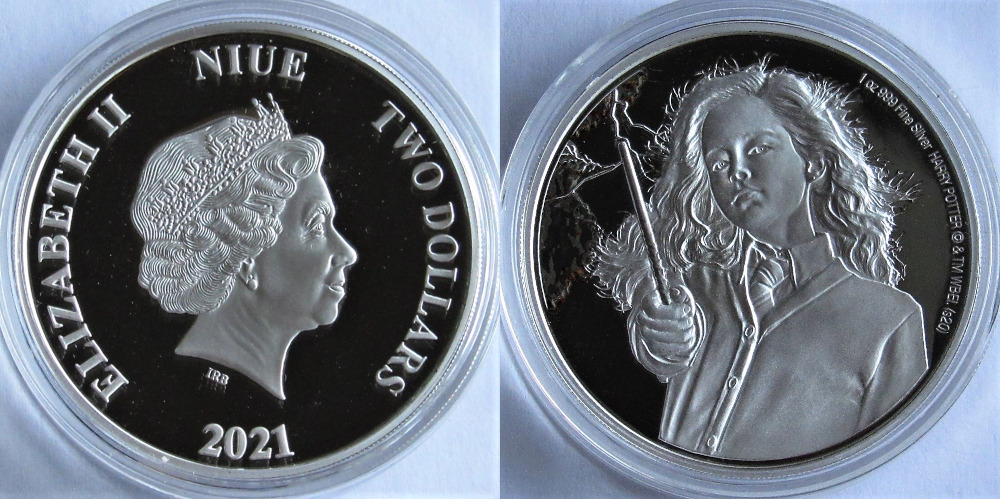Courageous Girls in the Coin Wonderland
by Gabriele Sturm, translated by Maike Meßmann
We all remember the time when parents or grandparents told us about extraordinary kids, fantastic animals and other curious creatures. And we also remember the eagerly awaited pleasure of finally being able to explore the wonderful stories of children’s books for ourselves – a journey that took us into worlds that were sometimes foreign, sometimes familiar and whose protagonists could be both positive and negative identifiers.
In addition to their literary life, some of these characters made it onto the screens of movie theatres, TVs or computers – some of them are just like readers imagined them to be, and others are not.
Modern numismatics, or rather, the coinage industry of recent years also discovered some of the heroines and heroes from the children’s and young adult literature of the past two centuries. In this article, I want to find out in which situations which invented girls are depicted on coins. In doing so, I limit myself to courageous girls – i.e. those who bravely and curiously face up to uncertain situations with self-confidence and optimism and, in the end, successfully overcome them.
The background: It was not until the cultural epoch of the Enlightenment in the 17th century that people became aware of the fact that childhood is a separate chapter in the life of every human being; in the 18th century, a second phase called “adolescence” was added to this concept (Ariès 1975). With the spread of this new insight, corresponding educational institutions and writings emerged especially in the 19th century in the context of a more self-confident middle class.
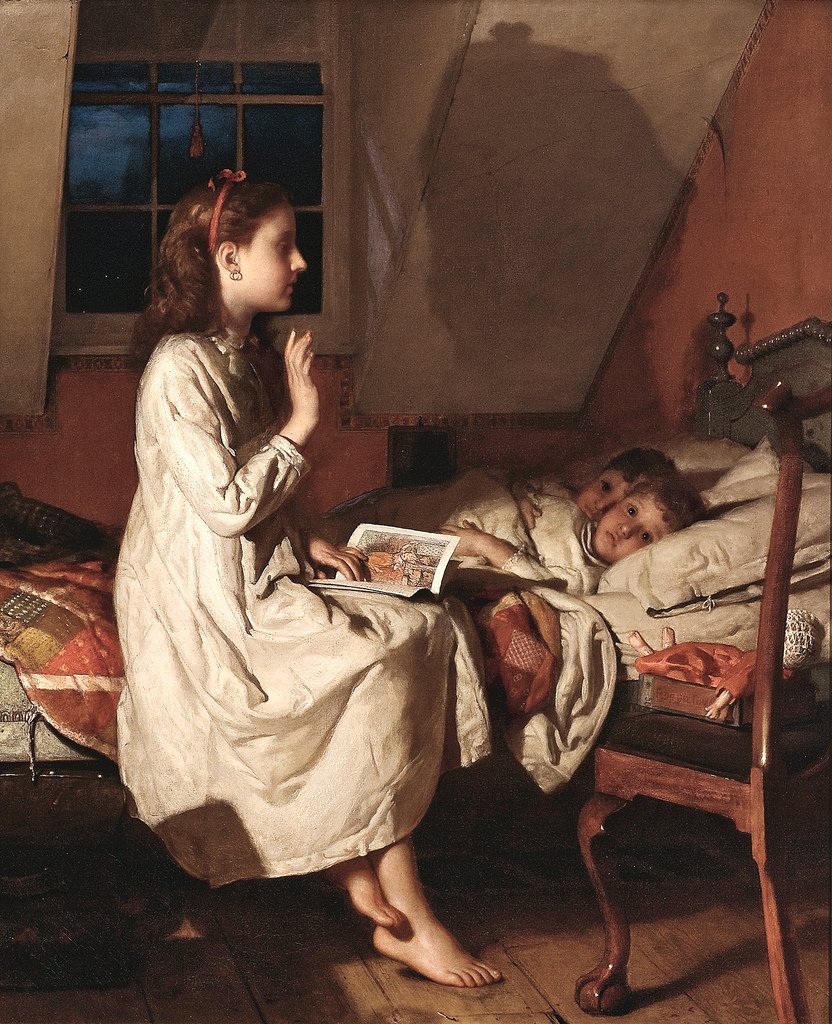
Seymour Joseph Guy: Story of Golden Locks, painting of ca. 1870. The painting shows the artist’s childhood.
As a result of the popularity of fairy tale collections during the Romantic era, contemporary fairy tales were created at the same time. To distinguish them from folk tales/traditional fairy tales, these new works were called modern fairy tales. Among the most popular fairy tale writers of that period are Ludwig Tieck (1773–1853), E.T.A. Hoffmann (1776–1822), Clemens Brentano (1778–1842), Alexander Sergejewitsch Puschkin (1799–1837), Wilhelm Hauff (1802–1827), Hans Christian Andersen (1805–1875) and Oscar Wilde (1854–1900). Folk tales are typical of the region and the period during which they were written down. Modern fairy tales, however, point out the social hierarchy of their age even more. They illustrate the economic, social and cultural poverty of large parts of the population (especially children) or emphasise the emerging negative consequences of the onset of industrialisation and the simultaneous release of the peasant, mainly serf population. Since the female protagonists of Hans-Christian Andersen’s modern fairy tales that are depicted on coins do not seem to be very encouraging for young female readers, they are not presented in this overview. Also missing is the young American Dorothy Gale from the tale The Wizard of Oz, written by L. Frank Baum and published in 1900, because I do not have images of the corresponding coins (Cook Islands 2017 and Tuvalu 2019).
Things are different regarding Marie from the modern fairy tale The Nutcracker and the Mouse King (1816) by E.T.A. Hoffmann (1776–1822): Thanks to various stories, Marie discovers on Christmas Eve that her brother’s damaged nutcracker is the bewitched missing nephew of her godfather. She confidently follows the ugly and injured nutcracker into the puppet kingdom and assists him in the fight against the Mouse King. As a result of her bravery, she is able to release the spell, the nephew can be human again and Marie wins him as her partner. In Peter Tchaikovsky’s ballet, composed in 1892, the protagonist is called Clara, just like the daughter of Hoffmann’s friend J.E. Hitzig, who was the model for the heroine portrayed in the fairy tale. However – due to the limited formal language of classical narrative ballet – the female protagonist is deprived of much of her strength in terms of body language in the coin images referring to her.
- Cook Islands, 2 dollars, 2008. Series: Animated films of Soviet Soyuzmultfilm – The Nutcracker (1973) after E.T.A. Hoffmann.
- Belarus, 20 rublòu, 2009. Series: Fairy Tales of the World
- United Kingdom, 5 pounds, 2018. Stylized ballet figures for the series: Christmas Coins.
The transition from modern fairy tales to children’s books was seamless. Pinocchio by Carlo Collodi Lorenzini (1826–1890) and The Wonderful Adventures of Nils by Selma Lagerlöf (1858–1940; Nobel prize: 1909) are some fantastic serials with educational value. As a courageous girl, ALICE became world famous. Her adventures were immortalized in the two books Alice’s Adventures in Wonderland (1865) and Alice Through the Looking Glass (1871) by Lewis Carroll (1832–1898) with illustrations by John Tenniel, and are still considered prime examples of literary nonsense that captivates children and adults alike.
- France, 1.5 euros / 20 euros, 2003. Series: Childhood Dreams of the World.
- Belarus, 20 rublòu, 2007. Two versions for the series: Fairy Tales of the World
- Solomon Islands, 2 dollars, 2014. Occasion: 150th anniversary of the first illustrated tale by Lewis Caroll.
- Tuvalu, 1 dollar / 2 dollars, 2015. Occasion: 150th anniversary of the first illustrated tale by Lewis Caroll.
- Niue Island, 2 dollars / 25 dollars, 2016. Occasion: 65th anniversary of Disney’s animated movie Alice in Wonderland.
- Niue Island, 2 dollars, 2018. Four scenes from Disney’s animated movie Alice in Wonderland in a box.
- Isle of Man, 50 pence, 2021. Occasion: 150th anniversary of the serial by Lewis Caroll.
- Niue Island, 2 dollars, 2021. For versions for the 70th anniversary of Disney’s animated movie Alice in Wonderland.
- United Kingdom, 1 pound / 2 pounds / 5 pounds / 100 pounds, 2021. Two versions each for the occasion: 150th anniversary of the serial by Lewis Caroll – CoCo GB-2021-0140 bis GB-2021-0147.
The fact that the adventures of the “oldest” courageous girls in children’s and young adult literature presented here take place in fantasy worlds is hardly surprising. The social reality of adult women in the 19th century did not allow them to act the way they could in their imagination. “Based on qualities such as virtue, modesty and diligence, women are assigned their roles as housewives and mothers. Because they supposedly lack objectivity and judgment, women are denied the status of autonomous human beings. A guardian, for example their father, brother or husband, dictates their lives” (Warsitz n.d.) – at least regarding families of the aspiring bourgeoisie. The next heroine presented here numismatically, the orphan HEIDI from the novels by Johanna Spyri (1827–1901) published in 1879 and 1881, is at risk of being crushed by these social constraints. You can read about her adventures in Heidi: Her Years of Wandering and Learning and Heidi: How She Used What She Learned. Heidi gets support from nature – which is strongly idealised by the author – and from her grandfather, who lives a non-conformist life. The coin images show the hard and lonely life of a shepherd girl of that time – however, they do so from an extremely trivialized perspective.





